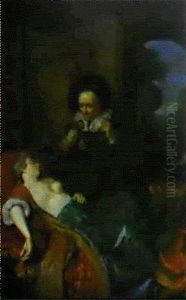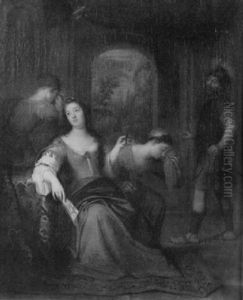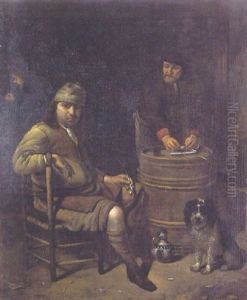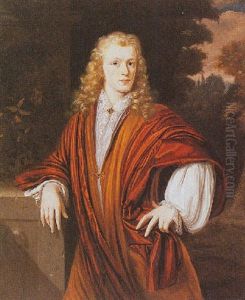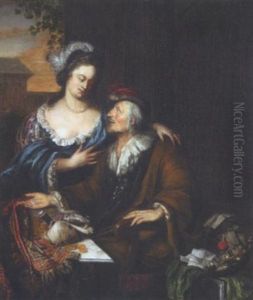Mathijs Wulfraet Paintings
Mathijs Wulfraet, also known as Matthias Wulfraet, was a Dutch painter born in the year 1670. He was primarily active during the late 17th and early 18th centuries, a period known for the Dutch Golden Age in the previous century, which had seen a flourishing of arts and culture in the Netherlands. Despite the fact that the peak of the Dutch Golden Age had passed, Wulfraet still managed to make a name for himself as an artist.
Wulfraet's body of work primarily consists of genre scenes, portraits, and historical subjects. He was known for his meticulous attention to detail and his ability to capture the textures and subtleties of fabrics and materials. His genre scenes often depicted everyday life and activities of the middle and lower classes, a common theme among Dutch artists of the time, showing the influence of earlier Dutch masters.
Despite his talent, Mathijs Wulfraet was not as widely recognized as some of his contemporaries. His works, however, did gain some attention for their narrative quality and the skillful rendering of his subjects. The artist spent most of his life in the Netherlands, and his paintings reflect a deep understanding of Dutch society and culture.
Wulfraet passed away in the year 1744. While he may not have achieved the fame of some of his peers, his work did contribute to the rich tapestry of Dutch painting. Today, his paintings are studied for their historical value and their representation of Dutch life in the post-Golden Age era. They can be found in private collections as well as in museums that focus on Dutch art from this period.










